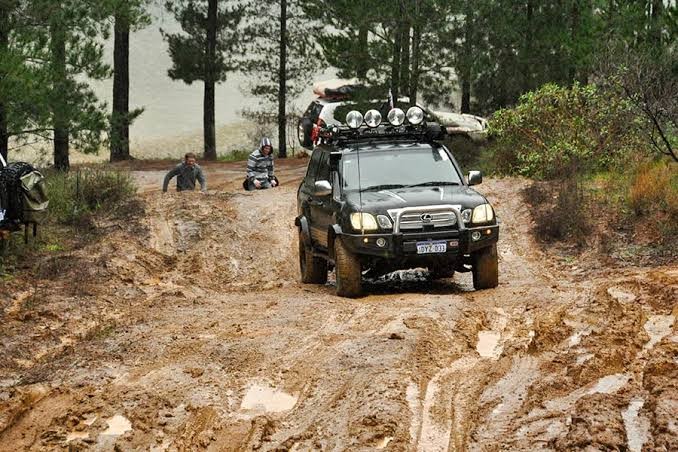Each year, over 116,000 Americans are injured and more than 1,300 lose their lives on snowy, slushy, or icy pavement. A single moment of lost traction can change everything.
As someone who's spent decades helping drivers master challenging road conditions, I've seen firsthand how proper techniques and preparation can make the difference between a safe journey and a devastating accident.
Understanding the Danger Zone
Slippery roads aren't just a winter phenomenon. Rain-slicked highways, oil patches, and fallen leaves create treacherous driving conditions year-round. The Federal Highway Administration reports nearly 4,900 fatal crashes occur annually due to adverse weather or slippery road conditions. That's a sobering reality.
The physics is simple but unforgiving. When your tires can't grip the road properly, you lose control of three critical functions: acceleration, steering, and braking. What many drivers don't realize is how dramatically stopping distances increase. On ice, your stopping distance can be up to ten times longer than on dry pavement!
Preparation: Your First Line of Defense
Tire Talk: Your Only Contact with the Road
Your tires are literally where the rubber meets the road. Everything else is just wishful thinking if they can't maintain traction.
Check your tread depth regularly. The penny test works well, insert a penny with Lincoln's head upside down into the tread. If you can see the top of his head, your treads are too worn. For winter driving in severe conditions, consider dedicated winter tires with the Alpine symbol, which provide significantly better traction on ice and snow.
Tire pressure matters tremendously. Cold weather causes tire pressure to drop, so check it monthly during winter. Underinflated tires reduce traction and can cause dangerous heat buildup.
Vehicle Systems That Save Lives
Modern vehicles come equipped with remarkable traction-enhancing technology:
- Traction Control System (TCS) monitors wheel spin during acceleration and automatically reduces power or applies brake pressure to prevent slippage. It's most effective when accelerating from a stop or climbing slippery hills.
- Anti-lock Braking System (ABS) prevents wheel lockup during hard braking, allowing you to maintain steering control while slowing down. The pulsing sensation under your foot during emergency braking is ABS working properly - don't release the pedal!
- Electronic Stability Control (ESC) works in conjunction with these systems to help maintain directional control during emergency maneuvers. It's particularly effective in preventing skids during cornering on slippery surfaces.
Mastering Slippery Road Techniques
The Gentle Touch Philosophy
On slippery roads, every input should be gentle and deliberate. Imagine you're driving with a full cup of hot coffee on the dashboard, that's the level of smoothness required.
Accelerate gradually. Apply throttle gently and progressively. Quick acceleration is the enemy of traction, the tires will spin, and you'll lose control.
Brake early and lightly. Begin slowing down much sooner than you would on dry roads. Pumping your brakes isn't necessary with ABS - apply steady pressure and let the system do its work.
Steer smoothly and precisely. Avoid sudden movements of the steering wheel. Gradual steering inputs give your tires the best chance to maintain grip.
Increase following distance dramatically. The normal 3-second rule should become at least 5-7 seconds on slippery roads. This gives you crucial time to react and stop safely.
When Things Go Wrong: Handling Skids
Despite best precautions, you may find yourself in a skid. Don't panic! Here's what to do:
- For a front-wheel skid (understeer), where the car continues straight despite turning the wheel: Ease off the accelerator, avoid braking, and gently steer in your desired direction. As traction returns, the front wheels will regain grip.
- For a rear-wheel skid (oversteer), where the back end slides out: Turn the steering wheel in the direction of the skid - if the rear is sliding right, steer right. This counterintuitive action helps realign the car. Avoid braking or accelerating until control is regained.
The Black Ice Challenge
Black ice is particularly dangerous because it's nearly invisible. This thin, transparent layer of ice forms when light rain or melting snow freezes on the road surface, creating the appearance of merely wet pavement.
Watch for these warning signs:
- Lack of spray from tires of vehicles ahead
- Pavement that appears unusually shiny or glossy
- Sudden reduction in road noise
Black ice commonly forms on bridges, overpasses, and shaded areas where the sun can't reach. These spots freeze first and thaw last. Exercise extreme caution when approaching these areas, especially during dawn, dusk, and night hours when visibility is limited.
If you encounter black ice, don't brake! Maintain your steering direction and gently lift off the accelerator to slow down gradually.
The Safest Decision May Be Not to Drive
Sometimes the wisest choice is to stay home. If weather forecasts predict severe conditions, postpone non-essential travel. No meeting or event is worth risking your life or others'.
Remember, even the most skilled drivers with properly equipped vehicles can face overwhelming challenges on extremely slippery roads. There's no shame in choosing safety first.
After nearly three decades working with drivers in all conditions, I can tell you confidently: The most important safety feature in any vehicle is the person behind the wheel making good decisions. Drive like your life depends on it, because it does.

Comments (0)
Please login to join the discussion
Be the first to comment on this article!
Share your thoughts and start the discussion